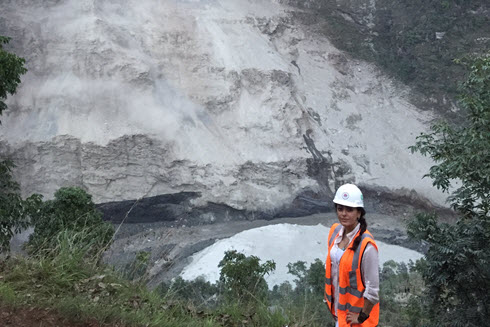Their high-rise building started shaking around 3 a.m.
“We woke up, and I remember my mom pulling us out of the apartment,” said Menzer Pehlivan. “And I’m 13 years old, so I’m like, ‘What is going on?’”
Pehlivan and her family were living in Ankara, Turkey, when a 7.6-magnitude earthquake shook the country on Aug. 19, 1999. They were about 200 miles from the Izmit epicenter, but the effects sent the residents of their apartment tower scurrying for safety.
“My mom made me take our things and said, ‘No, we are definitely leaving,’” Pehlivan remembers. “We spent the night in our family’s car listening to the radio.”
Pehlivan’s family survived the quake mostly unscathed, but their country had not. A huge portion of northwest Turkey was reduced to rubble. City block after city block had collapsed. The death toll climbed by the thousand.
Pehlivan was not content to process the tragedy through the eyes of a typical young teenager. She wanted answers. She wanted to help. Thus began her civil engineering career.
“The 1999 earthquake definitely played a huge role,” said Pehlivan, Ph.D., P.E., A.M.ASCE, now a geotechnical engineer for CH2M Hill in Seattle and one of the ASCE 2016 New Faces of Civil Engineering Professionals.
“I think anyone who lived through the earthquake in Turkey will always remember that night. I know it had a great impact on who I am.”
Pehlivan began studying civil engineering. For her master’s research she analyzed the same kind of soil liquefaction that plagued Turkey during the Izmit earthquake.

“In Turkey, there were so many wonderful engineers [at the time of the earthquake],” Pehlivan said. “But there was a lack of knowledge transfer. It didn’t really get into the building codes.
“The earthquake was a reality check for me. I just wanted to help reduce the risk and increase our resiliency against natural disasters.”
It was that desire to learn and assist that put Pehlivan back on earthquake-ravaged land, 16 years after her life was forever changed by Izmit. She flew to Katmandu in May as part of a reconnaissance team a little more than a month after the main shock of a 7.8-magnitude Nepal earthquake.
“Every earthquake, every extreme event, teaches us something new,” Pehlivan said. “It’s very important to capture that data and learn from it.
“You can learn from the resilient structures, how they survived and how they responded during any extreme event. There’s no way of testing that. We cannot really capture what is happening when a earthquake hits. So any data for this type of extreme event is definitely crucial for the advancement of earthquake engineering.”
And Pehlivan knows from personal experience just how valuable that data can be.
“The 1999 earthquake just made all of us living in Turkey, I think, realize how important the profession of civil engineering is and how much of an impact it has on our daily lives,” Pehlivan said.
ASCE’s New Faces of Civil Engineering recognition programs highlight the next generation of civil engineering leaders. By showcasing young, diverse, talented engineers the program shows that engineering is an exciting profession open to everyone. Ten honorees are selected by ASCE in each of two divisions: collegiate and professional.
The honorees will be recognized during Engineers Week, which starts Feb. 21, and at ASCE’s annual Outstanding Projects And Leaders (OPAL) Gala, March 17, in Arlington, VA.


